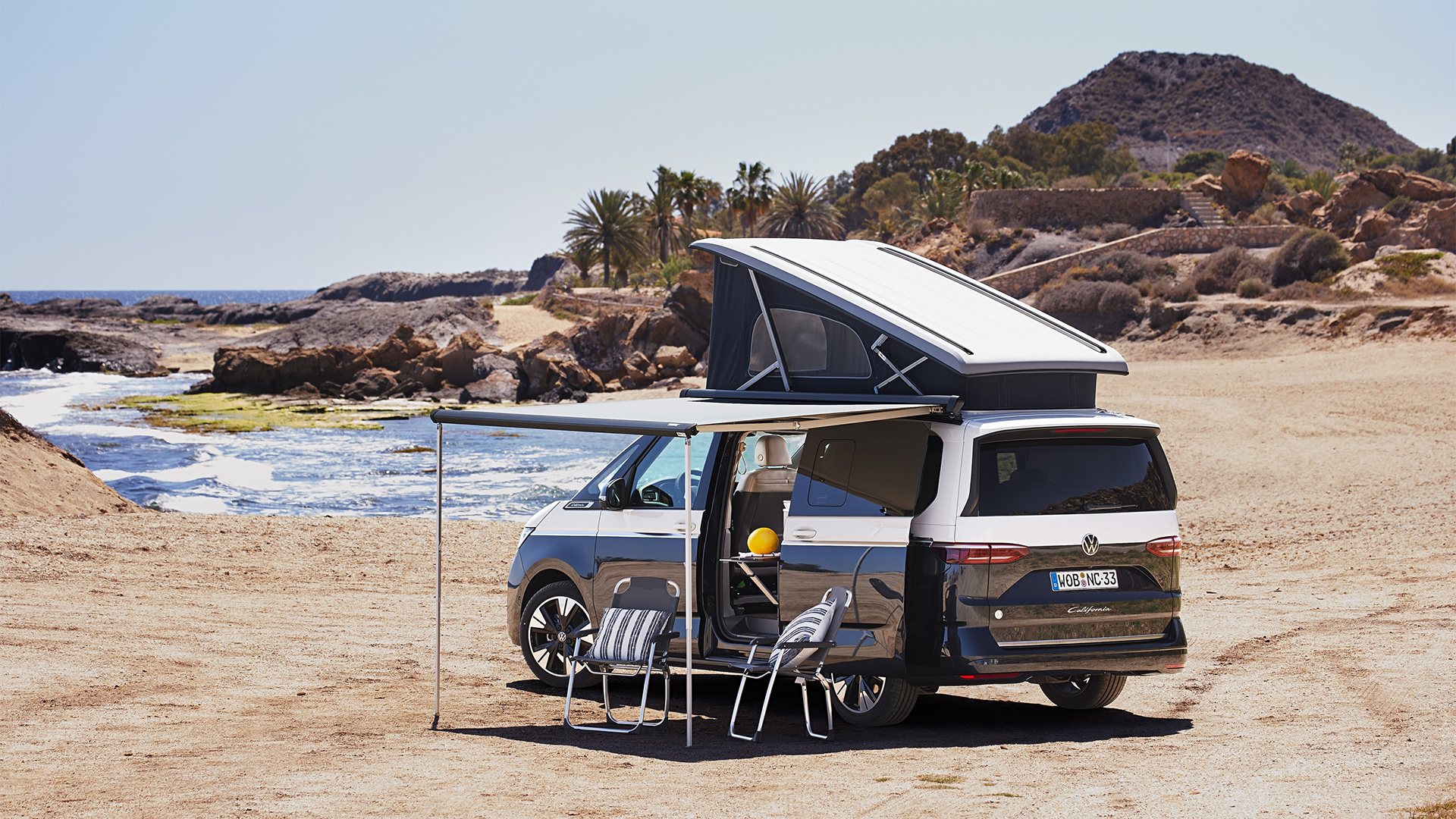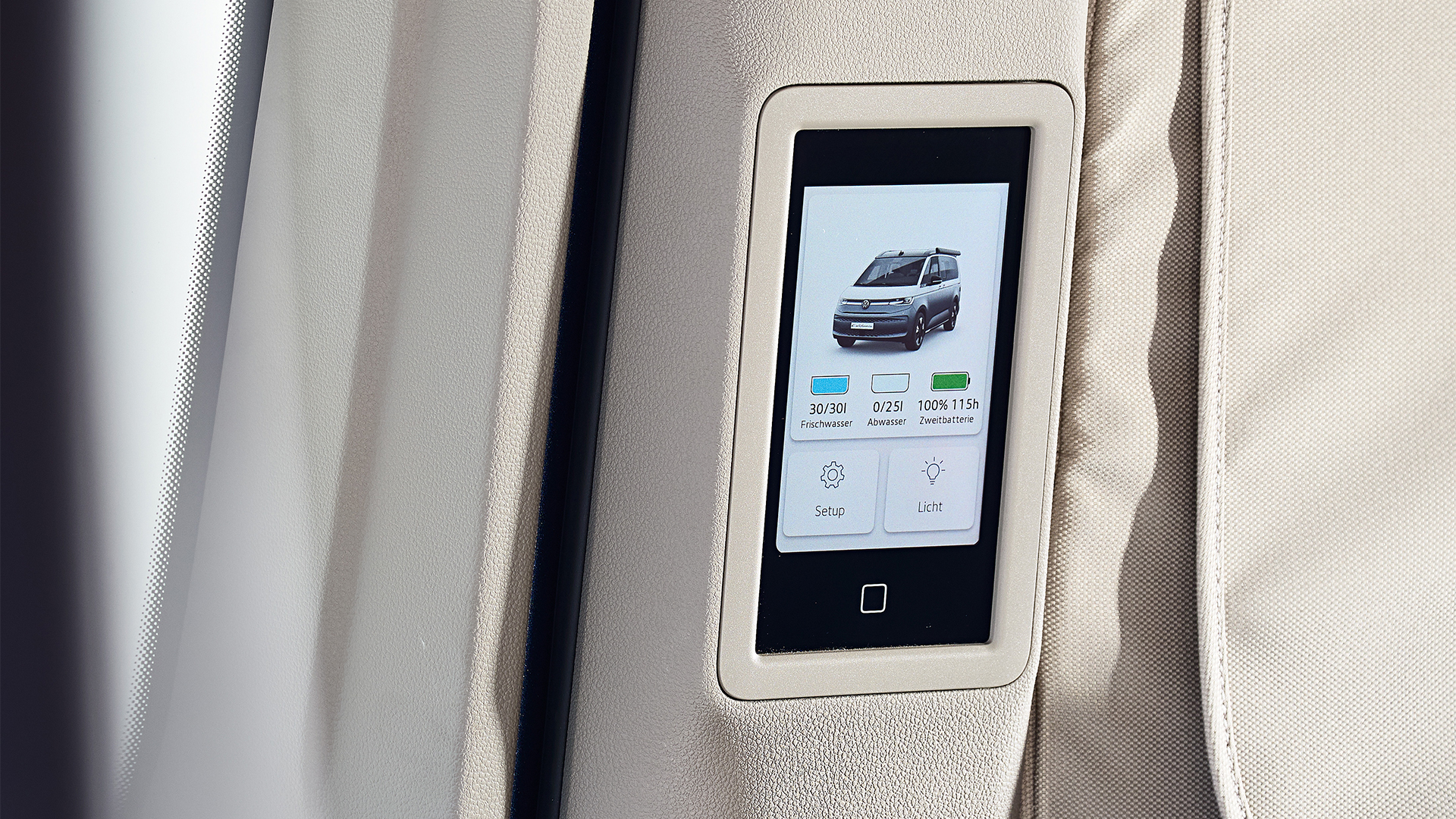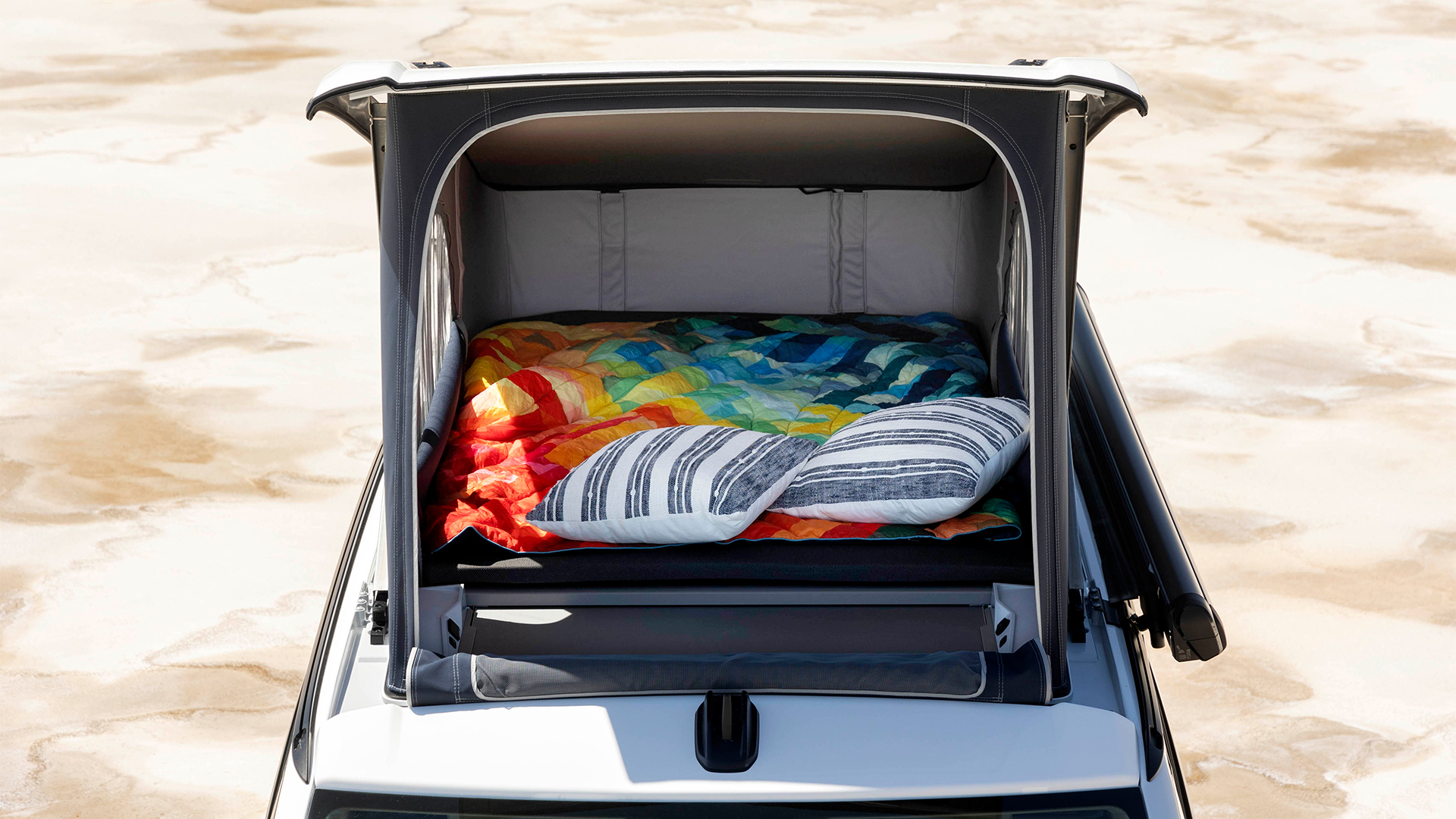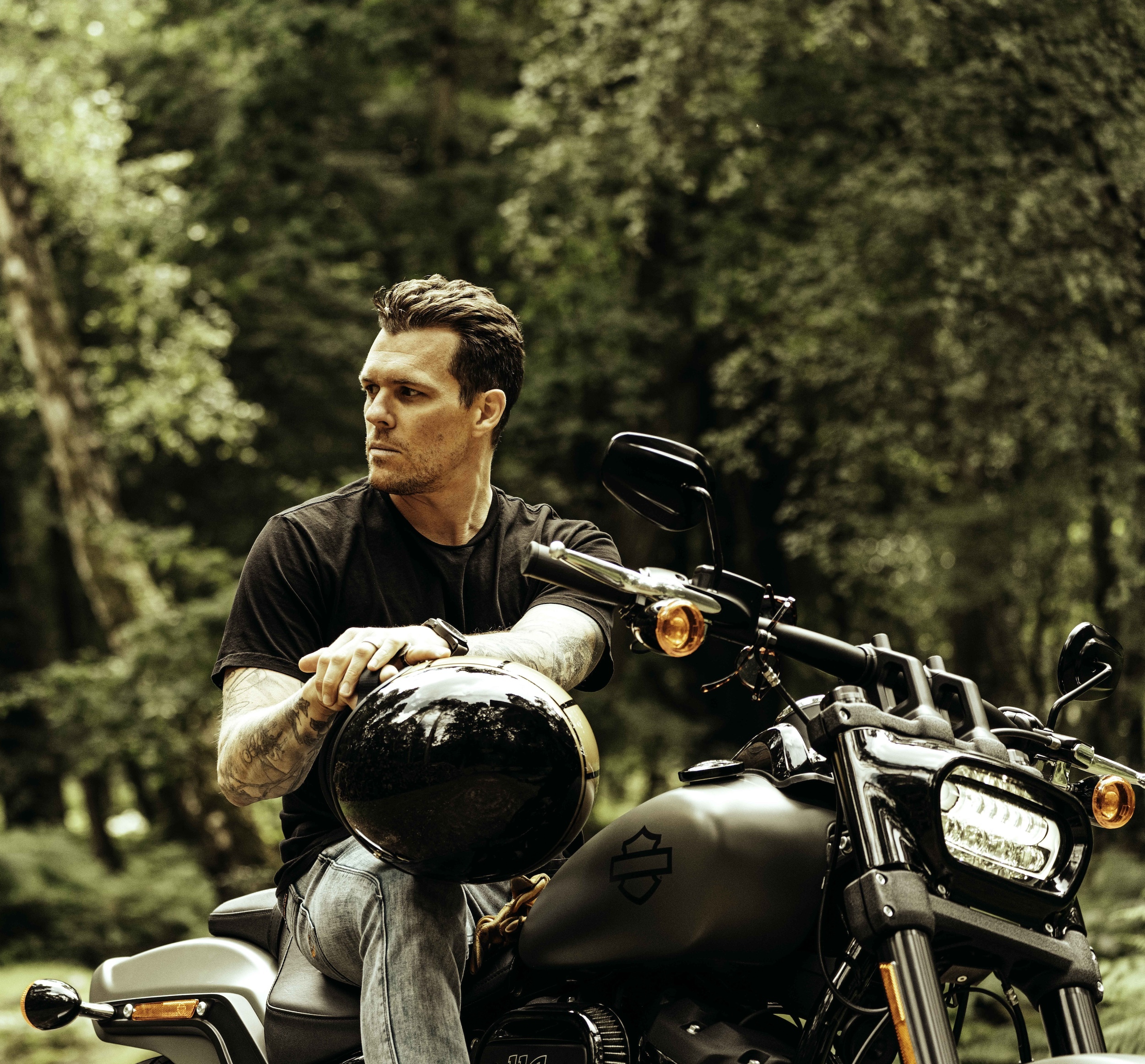The ultimate glamping machine? Volkswagen's new California camper gets the high-tech treatment
Sleeping under the stars doesn't have to mean roughing it

Volkswagen has revealed all about its latest California camper van model, which is now based on the long wheelbase version of the excellent Multivan, meaning it boasts more high-tech touches and a smoother drive than ever before.
After teasing a concept last year, VW confirms this is the first time its California camper will be offered with a plug-in hybrid powertrain as an option. The eHybrid delivers 245hp thanks to a 1.5-liter turbo petrol engine pairing up with an electric motor and battery to drive all four wheels. Both petrol and diesel variants will also go on sale.
There is no official word on an all-electric range but the concept vehicle, upon which this production model is heavily based, boasted a 13kWh battery that was capable of delivering around 25-miles of emissions-free motoring.

Sharing most of its underpinnings with the modern Multivan, which itself has moved away from commercial vehicle platform and instead uses VW’s MQB car architecture, means the seventh generation California is both longer and wider, freeing up even more room inside for outdoor lifestyle luxuries, while offering a generally improved driving experience.
This is also the first time the California will come with twin sliding doors, making entry and exit far easier when parked up. The new configuration means VW has shifted around the interior, so the compact kitchen found in Beach Camper variants can be accessed from outside, including the ability to slide it rearwards and use the boot opening as a shelter from the weather while cooking or washing up.
The kitchen itself has also been redesigned so worktops neatly fold away and the hob, toolbox and sink are all cleverly stashed when not in use. Plus, there are myriad clever storage sections and drawers for cutlery and cooking utensils.
Previous models saw the kitchen area built into one side of the California, rendering twin doors impossible and impacting seat adjustment for driver or passenger, depending on where the steering wheel was located. This new configuration also allows the California to be specified with a rear bench seat (for three) or individual seats for that first-class travel feel.
Get daily insight, inspiration and deals in your inbox
Sign up for breaking news, reviews, opinion, top tech deals, and more.

As always, the latest California features a pop-up roof (including 'base' Beach models), which provides comfortable sleeping quarters for two adults, and all variants from Beach Tour up to California Coast receive a fold out mattress and rear seats that convert into an additional sleeping space.
More impressive still is the five-inch touch display that is found in the rear of new California and controls everything from fresh and waste water levels (top spec Ocean models come with a 28-liter fresh water tank), It also lets you tweak the background lighting, offers power supply status, adjusts the refrigerator temperature and sets timers for the auxiliary heater, if one is specified.
There’s even a neat Camping mode on the display that automatically deactivates the Coming Home and Leaving Home lights so not to disturb others in the campsite every time you open a door.
Most of the functions mentioned above can also be controlled via the California smartphone app, while the infotainment system has a new inclination display that enables the camper van to be leveled correctly for the perfect night’s sleep.
Analysis: Glamping comes at a cost

Volkswagen says pre-sales of the new California will begin this summer, with first deliveries expected to take place in the second half of this year. However, it is yet to confirm pricing for the new model.
The current model can be specified to cost in excess of £80,000 (around $100,000 / AU$152,000), so we expect the latest version, particularly the range-topping hybrid-powered Ocean models, to cost considerably more.
The recent camper van craze, itself spurred on by social media and the rekindling of our love of nature encouraged by the pandemic, saw demand for van conversions and ready-built camper vans and recreational vehicles go through the roof. As a result, the price for this sort of thing has also rocketed.
Despite a seemingly vast potential audience of outdoor lovers, Volkswagen made the decision not to sell the recent California 6.1 in the USA, due to the cost involved in homologating the model for markets outside of Europe. So it is highly unlikely the seventh generation will also find its way across the Atlantic.
Thankfully, the recent electric ID Buzz has been confirmed for sale in the US and Volkswagen Commercial Vehicles CEO, Carsten Intra, confirmed to Autocar in March last year that an ID Buzz-based camper will arrive in 2025 – so there’s still hope for a US-bound VW-badged camper yet
You might also like

Leon has been navigating a world where automotive and tech collide for almost 20 years, reporting on everything from in-car entertainment to robotised manufacturing plants. Currently, EVs are the focus of his attentions, but give it a few years and it will be electric vertical take-off and landing craft. Outside of work hours, he can be found tinkering with distinctly analogue motorcycles, because electric motors are no replacement for an old Honda inline four.